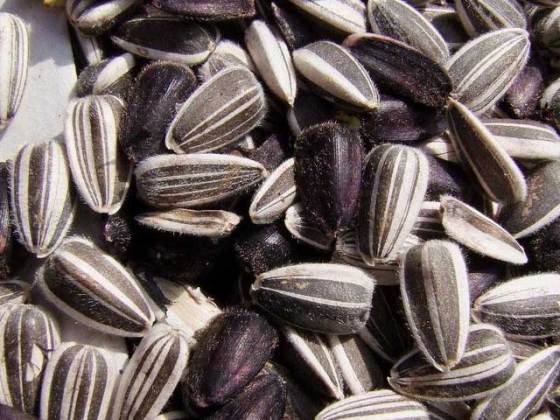Using sunflower seed husks in concrete and construction
 Sunflower seed and oil sector is the one the main industries in Turkey, so it is not surprising that a team of researchers at the Namik Kemal University in Turkey decided to devise ways to use sunflower seed husks – a huge byproduct of the vegetable oil and food industry. They found ways to turn this unmanaged waste into concrete and other materials that could be used in construction.
Sunflower seed and oil sector is the one the main industries in Turkey, so it is not surprising that a team of researchers at the Namik Kemal University in Turkey decided to devise ways to use sunflower seed husks – a huge byproduct of the vegetable oil and food industry. They found ways to turn this unmanaged waste into concrete and other materials that could be used in construction.
Turkey is the ninth largest sunflower producer in the world, generating almost a million tones of product from 584,000 hectares, the bulk of which is used in the manufacture of sunflower oil in the Thrace region. The by-product is approximately 300,000 tones of fibrous seed husk.
Engineers Can Burak Sisman and Erhan Gezer at the Namik Kemal University in Turkey, are hoping to find new applications for such waste in the creation of environmentally friendly materials and composites in the road-building and construction industries for instance. The team demonstrated that the use of husks reduces the density of concrete as well as boosting the material’s resistance to cracking after exposure to icy then thawing conditions.
Concrete is perhaps one of the most energy and resource intensive materials and researchers have investigated and applied waste rubber, glass powder and paper waste sludge as alternative fillers and bulking agents. The addition of such materials can affect significantly the properties of concrete altering its strength, density and water resistance detrimentally in some instances.
The team has turned to the sunflower seed and more specifically its inedible husk as a possible alternative material for concrete. The team has therefore experimented with different formulations of seed husk in a concrete mix. Concrete of 300 and 400 dosages was produced by adding various amount of sunflower seed husk (5, 10, 20 and 30 percent).
They produced concrete samples with a density of around 2,000 tones per cubic meter – the lowest density could be classified as “lightweight”. Introduction of sunflower seed husk dramatically reduced the unit weight, compressive strength, splitting tensile strength and freezing-thawing resistance, but it increased the water absorption rate after 28 and 90 days.
Physical and mechanical properties show that concrete produced with has great potential as a low cost lightweight building material, however, the researchers suggest that the sunflower seed concrete would be most suitable for the construction of one-tier agricultural buildings without the need of high load bearing floors. Among other uses, the researchers stated that low compressed samples possess suitable properties to be used for insulation applications.
For more information, read the paper published in International Journal of Environment and Waste Management: “Sunflower seed waste as lightweight aggregate in concrete production”.










Good approach for mixing in concrete.
In Kenya and Lesatho people mix dried Agave(cut into pieces) in concrete. agave has fibres which give binding energy. Agave is a care-free growth plant. It has multiple uses like in paper making,as biofuel,hecogenin(steroid) production,clothes from fibre,biogas production etc. Moreover it is a CAM Plant.
Crassulacean acid metabolism, also known as CAM photosynthesis, is a carbon fixationpathway that evolved in some plants as an adaptation to arid conditions In a plant using full CAM, the stomata in the leaves remain shut during the day to reduce evapotranspiration, but open at night to collect carbon dioxide (CO2). The CO2 is stored as the four-carbon acidmalate, and then used during photosynthesis during the day. The pre-collected CO2 is concentrated around the enzyme RuBisCO, increasing photosynthetic efficiency. Agave and Opuntia are the best CAM Plants.
Dr.A.Jagadeesh Nellore(AP),India
E-mail: anumakonda.jagadeesh@gmail.com